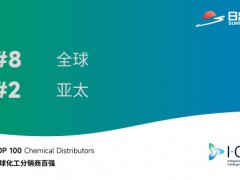据美国钻井网站2022年12月9日报道,美国石油巨头埃克森美孚公司12月9日宣布了未来5年的公司资本支出计划,该计划将年度资本支出维持在200亿至250亿美元。
埃克森美孚公司表示,计划大幅增加投资,旨在减少排放和不断增加的低排放举措,包括其低碳解决方案业务。据埃克森美孚公司称,低排放投资将增长到大约170亿美元。
这个计划预计到2027年前,收益和现金流潜力将比2019年翻一番,并支持公司的战略优先事项,包括在安全、股东回报、收益和现金流增长、成本和资本效率以及减少温室气体排放强度方面领先行业。
埃克森美孚公司董事长兼首席执行官表示:“我们的5年计划预计将推动领先的业务成果,并在2022年延续了行业领先的业绩。”“我们认为我们的成功是一个‘和’方程,在这个方程中,我们可以生产社会所需的能源和产品,并成为减少我们自己和其他公司温室气体排放的领导者。我们今天制定的公司资本支出计划反映了这一观点,迄今为止我们看到的结果表明,我们走在正确的道路上。”
埃克森美孚公司2023年的投资预计将在230亿至250亿美元之间,以帮助增加供应,以满足全球需求。与2019年相比,该公司还有望在2023年底前实现总额大约90亿美元的结构性成本削减。
由于对高回报、低供应成本项目的投资,预计到2027年前,埃克森美孚公司上游收益潜力将比2019年翻一番。超过70%的资本投资将部署在美国二叠纪盆地、圭亚那、巴西和世界各地的液化天然气项目的战略开发上。
到2027年前,上游油气日产量预计将增加50万桶油当量,达到420万桶油当量,其中超过50%的产量将来自上述关键增长地区。大约90%的上游投资将带来新的上涨的石油和天然气生产,预计在原油价格低于或等于每桶35美元的情况下,回报率将超过10%,同时到2030年,与2016年相比,上游运营的温室气体排放强度将降低40%至50%。
假设布伦特原油价格为每桶60美元,抵消战略投资组合剥离的影响,埃克森美孚公司明年短期上游投资预计将油气日产量保持在大约370万桶油当量。
埃克森美孚公司产品解决方案预计到2027年收益将比2019年增长近两倍。这些增长计划集中在高回报项目上,这些项目预计将使高性能化学品、低排放燃料和高价值润滑油的产量翻一番。埃克森美孚公司继续利用其行业领先的制造规模、集成和技术地位来升级产品组合并降低成本。
埃克森美孚公司宣布扩大其300亿美元的股票回购计划,到2024年将增至500亿美元。该公司最近还连续第40年提高了年度股息支付。到2022年底,埃克森美孚公司预计将向股东分配大约300亿美元,其中包括150亿美元的股息和150亿美元的股票回购。
增加低碳解决方案业务
到2027年,埃克森美孚公司已为其自身的减排和不断增长的第三方低排放计划拨款大约170亿美元,增长近15%。近40%的投资用于与客户建立的低排放业务,以减少他们的温室气体排放,主要重点是大规模碳捕获和储存、生物燃料和氢气。
这些低排放技术被认为是帮助应对气候变化的必要解决方案,并与埃克森美孚公司现有的竞争优势和核心能力紧密结合。剩余资金将用于支持该公司2030年减排计划及其2050年范围1和范围2净零排放目标。在二叠纪盆地,埃克森美孚公司的目标是到2030年,在其运营的非常规资产中实现范围1和2的净零排放。
报告说,“我们正在积极努力减少业务中的温室气体排放,与2016年的水平相比,我们2030年的减排计划有望实现上游温室气体强度减少40%至50%。”
“我们将继续倡导明确和一致的政府政策,加速实现低排放的未来。与此同时,我们将继续努力提供解决方案,帮助其他行业的客户减少温室气体排放,特别是在制造业、运输业和发电等排放较高的经济部门。”
李峻 编译自 美国钻井网站网
原文如下:
Exxon To Maintain Capex Levels At $20-25B Until 2027|
Supermajor ExxonMobil today announced its corporate plan for the next five years which maintains annual capital expenditures at $20-$25 billion.
Exxon said that it plans a sizeable increase in investments aimed at emission reductions and accretive lower-emission initiatives, including its Low Carbon Solutions business. According to the company, lower-emissions investments will grow to approximately $17 billion.
The plan is expected to double earnings and cash flow potential by 2027 versus 2019 and supports the company’s strategic priorities, which include leading the industry in safety, shareholder returns, earnings and cash flow growth, cost and capital efficiency, and reductions in greenhouse gas emissions intensity.
“Our five-year plan is expected to drive leading business outcomes and is a continuation of the path that has delivered industry-leading results in 2022,” said Darren Woods, chairman and CEO. “We view our success as an ‘and’ equation, one in which we can produce the energy and products society needs – and – be a leader in reducing greenhouse gas emissions from our own operations and those from other companies. The corporate plan we’re laying out today reflects that view, and the results we’ve seen to date demonstrate that we’re on the right course.”
Investments in 2023 are expected to be in the range of $23 billion to $25 billion to help increase supply to meet global demand. The company also remains on track to deliver a total of approximately $9 billion in structural cost reductions by year-end 2023 versus 2019.
Upstream earnings potential is expected to double by 2027 versus 2019, resulting from investments in high-return, low-cost-of-supply projects. More than 70% of capital investments will be deployed in strategic developments in the U.S. Permian Basin, Guyana, Brazil, and LNG projects around the world.
By 2027, upstream production is expected to grow by 500,000 oil-equivalent barrels per day to 4.2 million oil-equivalent barrels per day with more than 50% of the total to come from these key growth areas. Approximately 90% of Upstream investments that bring on new oil and flowing gas production are expected to have returns greater than 10% at prices less than or equal to $35 per barrel, while also reducing Upstream operated greenhouse gas emissions intensity by 40-50% through 2030, compared to 2016 levels.
Near-term upstream investments are projected to keep production at approximately 3.7 million barrels of oil equivalent per day in 2023 assuming a $60 per barrel Brent price, offsetting the impact of strategic portfolio divestments.
ExxonMobil Product Solutions expects to nearly triple earnings by 2027 versus 2019. These growth plans are focused on high-return projects that are anticipated to double volumes of performance chemicals, lower-emission fuels, and high-value lubricants. The company continues to leverage its industry-leading manufacturing scale, integration, and technology position to upgrade its portfolio and reduce costs.
The company announced an expansion of its $30 billion share-repurchase program, which is now up to $50 billion through 2024. It also recently increased its annual dividend payment for the 40th consecutive year. By year-end 2022, ExxonMobil expects to distribute approximately $30 billion to shareholders, including $15 billion in dividends and $15 billion in share repurchases.
Growing the Low Carbon Solutions business
ExxonMobil has allocated approximately $17 billion on its own emission reductions and accretive third-party lower-emission initiatives through 2027, an increase of nearly 15%. Nearly 40% of these investments is directed toward building our lower-emissions business with customers to reduce their greenhouse gas emissions with a primary emphasis on large-scale carbon capture and storage, biofuels, and hydrogen.
These lower-emissions technologies are recognized as necessary solutions to help address climate change and closely align with ExxonMobil’s existing competitive advantages and core capabilities. The balance of the capital will be deployed in support of the company’s 2030 emission-reduction plans and its 2050 Scope 1 and 2 net-zero ambition. In the Permian, the company is on track with its goal to reach net-zero Scope 1 and 2 emissions from its operated unconventional assets by 2030.
“We’re aggressively working to reduce greenhouse gas emissions from our operations, and our 2030 emission-reduction plans are on track to achieve a 40-50% reduction in upstream greenhouse gas intensity, compared to 2016 levels.”
“We will continue to advocate for clear and consistent government policies that accelerate progress to a lower-emissions future. At the same time, we’ll continue to work to provide solutions that can help customers in other industries reduce their greenhouse gas emissions, especially in higher-emitting sectors of the economy like manufacturing, transportation, and power generation,” added Woods.
免责声明:本网转载自其它媒体的文章及图片,目的在于弘扬石化精神,传递更多石化信息,宣传国家石化产业政策,展示国家石化产业形象,参与国际石化产业舆论竞争,提高国际石化产业话语权,并不代表本网赞同其观点和对其真实性负责,在此我们谨向原作者和原媒体致以崇高敬意。如果您认为本站文章及图片侵犯了您的版权,请与我们联系,我们将第一时间删除。





















